Image of the Day: May 2013
Stunning Solar Flare
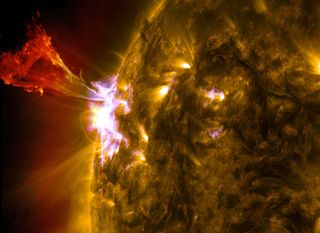
The sun is restless in this photograph captured May 3, 2013. The image captures a prominence eruption, a burst of solar material extending from the sun's surface. The sun is entering a period of solar maximum, when activity like this ramps up on an 11-year cycle. [See a video of the sun's daily life]
Welcome to the Neighborhood
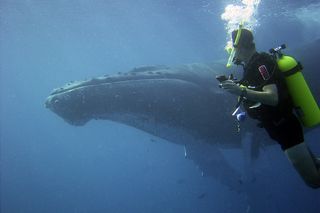
National Oceanic and Atmospheric Administration executive director Joe Pica meets the locals during a dive off the Dominican Republic. Pica was retrieving an acoustic buoy when this humpback whale stopped by to say hi. Humpbacks are found all over the world's oceans — they migrate as many as 16,000 miles (25,000 kilometers) a year.
Underwater Wonderland
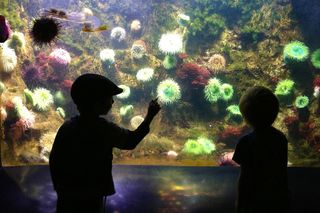
Two children marvel at a tank full of sea anemones at the Smithsonian National Zoo in Washington, D.C. Despite their quiet, plant-like beauty, sea anemones are invertebrate animals and carnivores. They eat mostly small shrimp and fish. [The Best Waterproof Cameras of 2013]
Ice, Ice, Baby
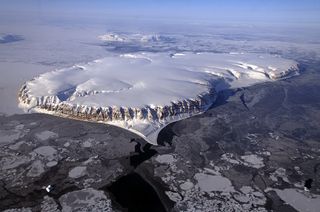
Icy Saunders Island in northwestern Greenland surrounded by sea ice in Wolstenholme Fjord. The thin, translucent ice in the foreground is known as "grease ice." This image comes from an IceBridge survey flight. The project is a NASA effort to gather ice measurements to improve models of Arctic land and sea ice.
Space Disco

Any guesses as to what this bedazzled ball might be? Well, it was built in the 1970s, but it's not a disco ball — it's a satellite. This is LAGEOS I, the Laser Geodynamics Satellite, launched 37 years ago on May 4, 1976. The satellite measured two feet (0.6 meters) across and weighed 900 pounds (208 kilograms), according to NASA.
So why the disco look? The mirrored surface reflected laser beams shot into space from the ground, sending them back and allowing for accurate measurements of the Earth's surface. LAGEOS I was able to measure the movement of the ground surface from earthquakes and other Earth-shuddering events.
Vermilion Vortex
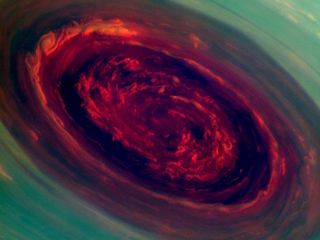
Around and around goes Saturn's north polar storm — as fast as 330 miles per hour (150 meters per second). This striking red photograph of the 1,250-mile-wide (2,000 kilometer) storm is a false-color image from NASA's Cassini spacecraft taken in November 2012. No one knows how long Saturn's north polar storm has been spinning, according to NASA. Saturn periodically sports "Great White Spots" thousands of kilometers wide. These white-cloud storms are sometimes visible by telescope on Earth.
Bad Birthday Boy

Somebody's not sharing his cake! One-year-old Tikal the jaguar keeps his twin sister Maderas away from their birthday party treat at the San Diego Zoo on April 26, 2013. Zookeepers made the young jaguars a "cake" made of ice and frozen blood, and Tikal was not inclined toward generosity. Mama knows best though: The cubs' mother Nindiri wasn't having any of her son's selfishness, and she joined in to enjoy the frozen treat, too.
Sign up for the Live Science daily newsletter now
Get the world’s most fascinating discoveries delivered straight to your inbox.
Whoooosh!
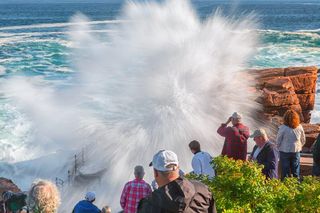
Watch out for that splash zone. "Thunder Hole" at Acadia National Park can be an intense experience. This Maine landmark consists of a small inlet and natural underwater cavern. When the surf is high, water and air get forced through the cavern under high pressure, shooting up like watery fireworks. (The waves are just as loud as fireworks, too, explaining the name Thunder Hole.) Water can shoot out of Thunder Hole as high as 40 feet (12 m).
Mommy and Me
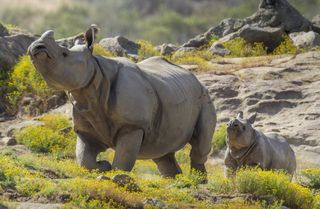
Wait up, Mom! Shomili, a four-month old greater one-horned rhinoceros runs behind her mother Sundari at San Diego Zoo Safari Park. Shomili, or "Mili" as zookeepers call her, was released into the park's Asian Savanna habitat to join the rest of the zoo's herd on April 23, 2013. Mili is the 65th greater one-horned rhino born at the zoo, which is working to conserve this endangered species. Only about 3,400 of these rhinos survive in the wild.












